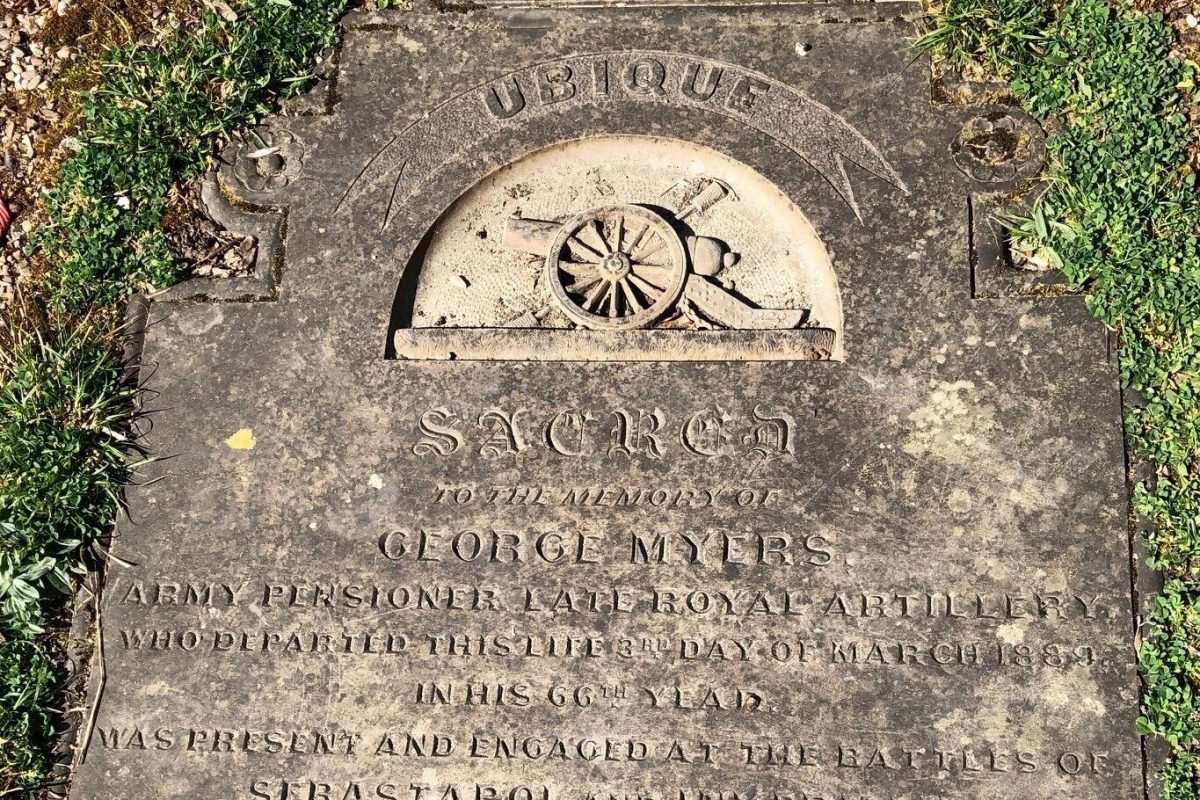George Myer’s stone, moved by the council in the 1970s, is now lying flat on top of the catacombs, and is distinguished by a relief sculpture of a cannon. He died in 1899 having served with the Royal Artillery. A tailor by trade, George was engaged in the battles of Sevastopol and Inkerman and gained three medals. One of the letters he wrote to his wife while he was serving in the Crimea – address: ‘Camp before Sebastopol’ – was published in the Sheffield Daily Telegraph 13 September 1855 less than three weeks after he wrote it, demonstrating the speed of communications. It was not just that newspapers had their correspondents on the front line, but ordinary soldiers could send news themselves. George plays down the horrors of battle although he briefly describes a shocking accident when one of the soldiers accidentally exploded a Russian shell and refers to a ‘dreadful engagement on the 15th’ but adds ‘most likely you will see it in the papers’. The letter accompanies a souvenir: ‘With this I forward to you the beads taken from the neck of a dead Russian soldier. Betsey’ (his 7 year old daughter) ’ must wear them with great care: I value them much, from the peculiar circumstances under which they came into my possession.’ What these were is not explained.

He finishes the letter, written 24th August , with the words:
‘We are expecting a dreadful engagement every hour, for this afternoon all the troops got under arms, and marched down to the trenches; and we are expecting nothing else but to storm the place. I expect it will be a hot gale, but it will be a good gale when it is over; for there is not a man in the Crimea who is not heartily sick of it, and would volunteer in the storming party so as to get it over.’
The inscription on his tombstone ends with the words ‘Erected by his surviving sons and daughters as a mark of respect and esteem.’



